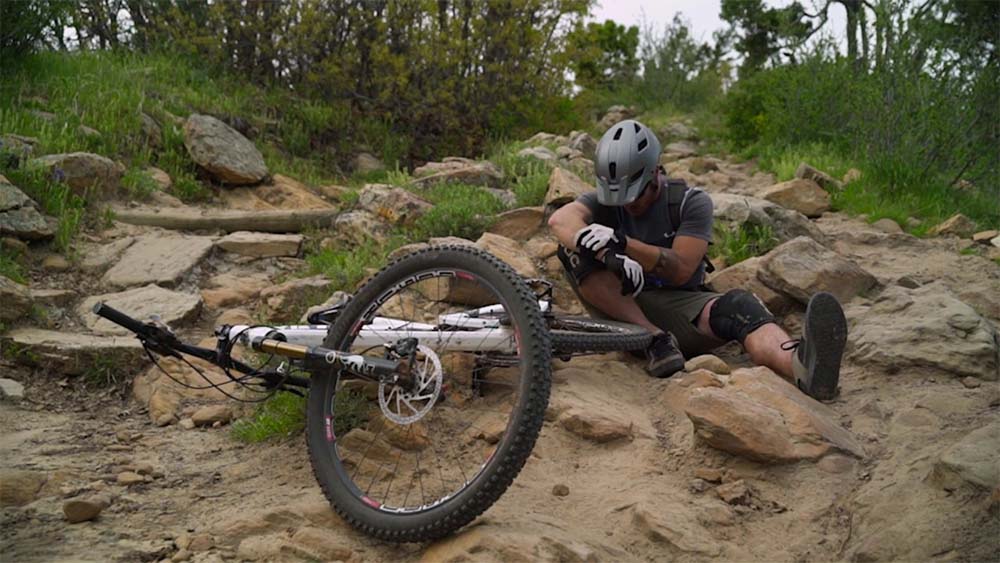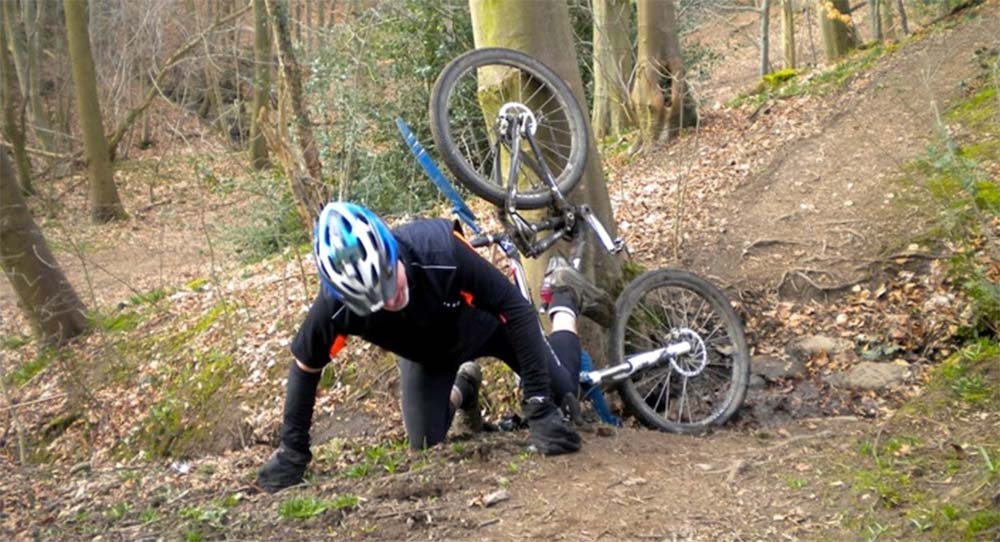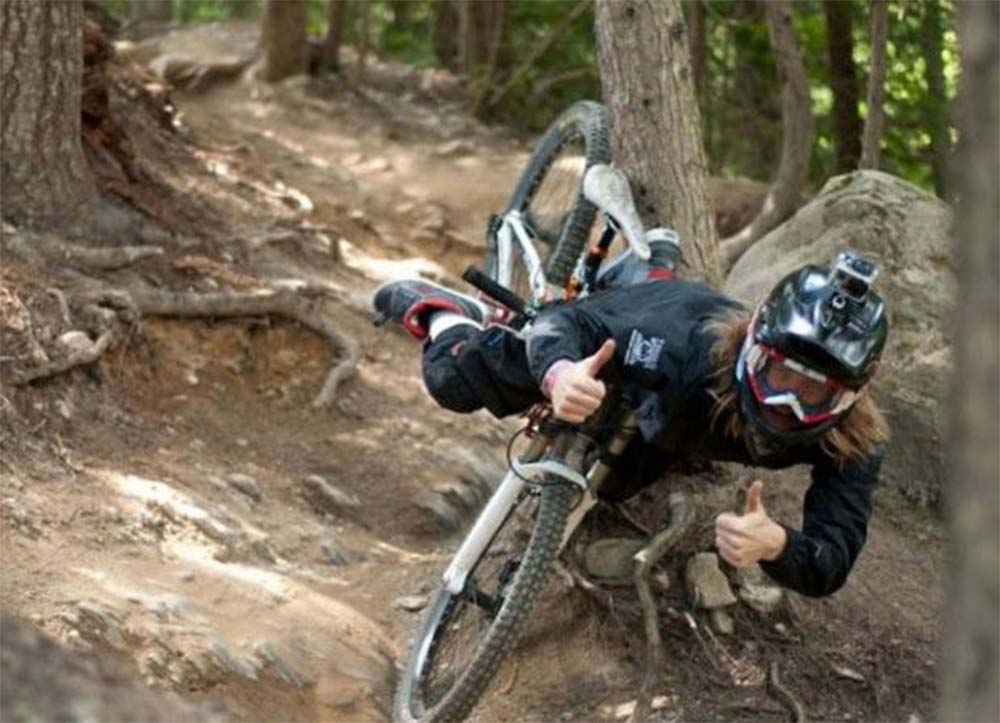Top 15 Ways to Prevent Mountain Bike Injuries

There’s nothing worse than starting a sport and then getting injured, especially one that knocks your confidence down or requires a break from injury to recover. Mountain bike injuries can be traumatic, such as when the rider hits the ground, a tree, or some form of static object. Alternatively, non-traumatic injuries, caused by overuse or abnormal use of joints, muscles, and ligaments. However, if you follow these important tips, you can reduce your chances of suffering any kind of injury.
1 Check before riding
Before starting any riding, be sure to thoroughly inspect your bike and other equipment. This is especially important if you are transporting your bike by car to the start of the route. Always check that both wheels are securely fastened and that the brakes and gears are working properly.
2 Warm up and stretch
As with any other form of exercise, you should always do some form of pre-workout warm-up and stretching. Proper warm-ups and stretches ensure your body is ready for exercise by gradually increasing your heart rate and stretching your muscles. If you just start “cold” with vigorous exercise, you’re at serious risk of muscle injury.
3 Put on a bike helmet
Never ride without a helmet…More than 80% of cycling-related deaths are due to head injuries, which can be avoided with a helmet on. It’s not worth the risk at all, so why not ride and be weird?
4 Wear cycling glasses
Glasses provide valuable eye protection against wind, mud, mud, sand, insects and branches. Many riders choose to wear sunglasses-style glasses, but the nature of mountain biking means you’re likely to be driving through heavily wooded areas as well as open terrain, and you’ll have a hard time seeing anything deep in the dark woods! Some glasses come with interchangeable tinted lenses, perfect for casual riding if you have time to stop and change your lenses. For competitive riding, it’s best to wear glasses with clear lenses, which protect your eyes and keep your vision clear at all times.

5 Knee and elbow pads
Many mountain bikers wear protective knee and elbow pads to help prevent trauma in the event of a fall. You should make sure that the pads do not interfere with your pedaling ability or the steering control of the bike.
6 Take care of your knees
Knee injuries can happen while riding, which is perhaps not surprising when you remember that your knees can bend about 10,000 times during a two hour ride! To prevent knee injuries, warm up properly, make sure the saddle is set up correctly, choose the right gear for the terrain, don’t push the big gear in winter and keep your knees warm.
7 “Recce” Before Cycling Downhill
If you’re riding in an unfamiliar area, it’s a good idea to remove from the bike and walk to check the downhill sections before getting on the bike! A lot of times, dangerous obstacles are hidden in the steep ground, and if you are rushing down an unknown hill, it may be too late to first see the hidden danger…
8 Avoid wrist and hand injuries
Wrist and hand pain is common after prolonged cycling. These pains are caused by the many shocks and shocks that travel up through the fork and the fact that the hand does not change position for a long time. Wrist and hand pain and injury can be avoided by ensuring your suspension fork is well maintained and maintained and wearing good cycling gloves. Mounting the bar ends allows you to move your hands more freely and adopt a more efficient riding position. Remember to take your hands off the handlebars and shake them occasionally to restore circulation.
9 stitches
The sharp pain of the needle stick is caused by the diaphragm being pulled under the ribs. To prevent stitches, instead of riding with a stoop on the handlebars, straighten your back to give your chest room to breathe. A proper warm-up can also help prevent stitches.

10 Stay hydrated
Both heat stroke and exhaustion can be caused by insufficient hydration. Make sure to drink plenty of water before and during your ride. “Hands-free” hydration systems such as CamelBak, Platypus or similar designs offer significant advantages over water bottles.
11. Avoid the dreaded bonk – energy for mountain bikers
When someone rides, it means they have no energy at all. They have to stop pedaling and may even have to lie on the side of the road. It’s a sad feeling. At worst, you may even experience nausea and/or vomiting.
One of the best ways to avoid a daze is to eat before your ride to store enough energy. One of my favorite pre-ride meals is oatmeal and sliced bananas or strawberries. This seemed to allow me to balance my energy well throughout the ride. For an hour-plus ride, I also bring an energy bar or two. If I’m hungry on the road, I’ll eat.
Another reason people go crazy is that they bite more than they chew. If you’re new to the sport, don’t plan extra long rides. Easy entry.
Some rules of thumb:
Avoid heavy, greasy, creamy, garlic-filled foods before riding
Long rides – large meal – 2-3 hours before ride
Short rides – small meal – 1-3 hours before ride
12 Plan Ahead – Going the wrong way can be an adventure
Still, some programs generally make the rides safer and more enjoyable. So check out roadside maps and take pictures of them with your phone. Consider time and distance before riding. Keep in mind that an hour can be delayed by 1.25 or 1.5 hours because you will get tired. Exhausted riders crash more often.
Stretching before the ride is fine, but may not actually be necessary. Sports medicine research suggests that stretching beforehand may not reduce injury if the activity is not explosive. Still, I don’t get on my bike, sprinting and jumping.
Some of my friends have a full stretch, which is fine. what should I do? I ride my bike and practice simple skills like track standing (staying on the pedals without letting the bike move forward). Plus, when we start riding, we build from there at an easy pace. Once the blood fills your muscles and you start to sweat, you can go all out.
13 Skin abrasions from rocks and branches – part of mountain biking
Every time your body rubs against something, you lose skin — sometimes a lot. Avoid this by riding smart and looking forward. Don’t look at the dirt in front of the front tires. Lift your chin and look forward.
If you do have a cut or scrape, spray the affected area with water immediately. Be careful not to overdo it though. If you’re on the road a long way, save your water because you’ll need some juice to get home. When you get home, clean the wound with plenty of warm soapy water and use an antiseptic bandage.
For deeper cuts and cuts, go to the emergency room to see if stitches are needed.
14. Low back pain on mountain biking – how to avoid it
Low back pain is very common and is sometimes caused by improper bike setup. The best solution is to go to your local bike shop for advice. Don’t go to the big sporting goods chains. They may not have enough experience to guide you on things like seat height, handlebar position and pedal cleat position.
Find out what kind of mountain bike you should be looking at if you have back problems. Here’s a link to the article: Best Mountain Bikes for Back Pain
If you have persistent low back pain, you may need to see a doctor. The last thing you want to do is ride around with a herniated disc. Finally, if you have a few extra pounds around your waist, this can lead to back pain. Mountain bikes are a great way to get rid of a spare tire!
15 Knee Pain/Cycling ITB Syndrome
Knee pain is common among cyclists. This is ironic because for knee rehabilitation a stationary bike is often recommended. Nonetheless, for the MTB population, there are other factors for knee injury, such as impact and/or twisting when trying to pinch out of the pedals.
Knee pain can often be traced back to one of the following factors:
The saddle is too high or too low
Seat too far forward or backward
Using too high (hard) gears – “pedal mash”
hard sprint
Poorly placed pedal cleat
Crank length is too long or too short
Iliotibial band (ITB) syndrome is a common knee condition among cyclists. Usually, you will feel pain on the outside of your knee. It may be severe or burning pain. The ITB is a band of fibrous tissue that runs from your hip to below the outer edge of your knee. When it becomes inflamed, it causes the ride to stop painful. ITB syndrome can be caused by cleats that place your feet in the pigeon-toe position. Like back pain, consult your local bike shop for setup. If pain persists, see a doctor.
If you are looking for a new way of commuting or want a healthier lifestyle, we are here to help you. Visit our website to learn more about electric bikes and electric scooter or please leave information to us.
 Shuangye ebike
Shuangye ebike
